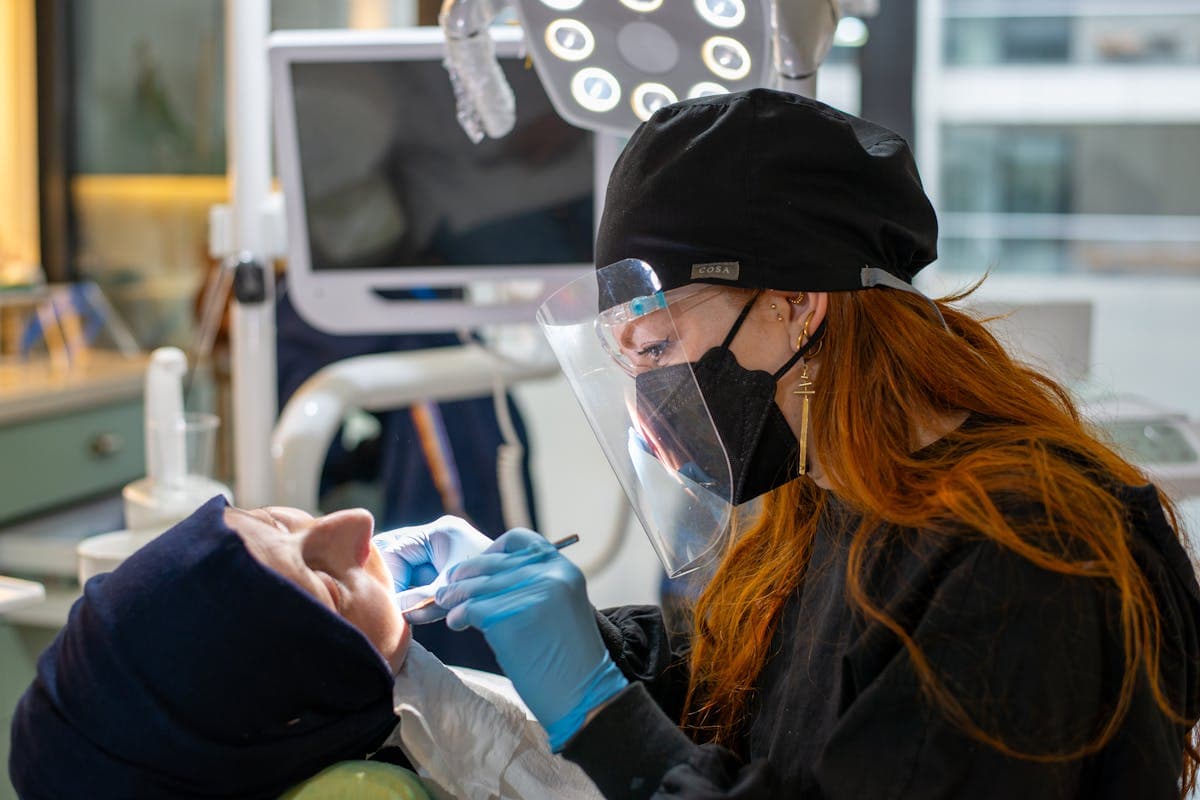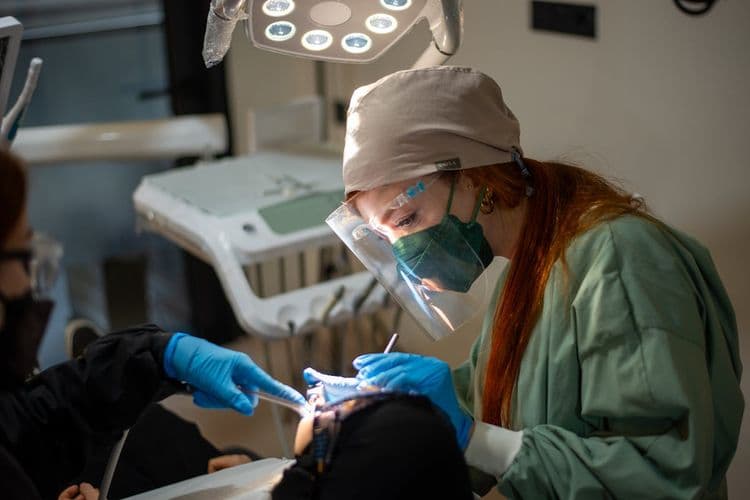In the domain of periodontal treatments, osseous surgery has emerged as an essential intervention for addressing advanced stages of gum disease. This procedure, which involves the targeted reshaping or removal of bone around teeth, has been lauded for its capacity to notably reduce pocket depths and enhance overall gum health. While such surgery is often a last resort after non-surgical treatments have proven unsuccessful, contemporary techniques have made the process less invasive, leading to diminished post-operative discomfort and expedited recovery times. As we explore this subject further, we will uncover the myriad benefits of osseous surgery, its potential risks, and real-life success stories.
Understanding Osseous Surgery
While osseous surgery may seem intimidating, it is a common and necessary procedure for many dental patients suffering from periodontal disease. This technique involves the reshaping or removal of the bone surrounding the tooth, aiming to decrease pocket depth and promote healthier gum tissue. Over the years, osseous techniques have evolved considerably due to surgical advancements. Modern procedures now use a combination of traditional methods and innovative technology, allowing for more precise, effective treatments. This progress has also led to less invasive surgeries, resulting in reduced post-operative discomfort and quicker recovery periods. Understanding osseous surgery is essential in appreciating its significance in oral health management and the continued advancements in its application.
The Need for Osseous Surgery
Recognizing the circumstances under which osseous surgery becomes necessary is an integral part of deepening our understanding of this procedure. Osseous surgery, a specialized form of periodontal treatment, is often indicated when bone health is compromised due to advanced periodontal disease. The primary surgical indications are usually cases where non-surgical treatments have proven ineffective in halting the progression of bone and gum tissue loss. The procedure assists in reducing pockets that harbor bacteria, thereby curbing further bone destruction. It also facilitates easier oral hygiene practices for the patient. Hence, osseous surgery is a crucial therapeutic approach in preserving bone health and integrity, particularly when other treatments have failed to yield the desired outcomes.
Preparing for the Procedure
A thorough understanding of the preparatory steps for osseous surgery is essential for both the patient and the dentist. It is important to set patient expectations accurately, ensuring they are well-informed about the procedure, its benefits, potential risks, and recovery period. This meticulous briefing helps manage surgical anxiety, which is often a significant concern for patients undergoing osseous surgery.
The dentist should also perform a detailed assessment of the patient’s oral health status, considering factors such as bone quality, periodontal condition, and general health status. This allows the dentist to plan the surgical approach meticulously. It is also vital to instruct patients on preoperative care, including oral hygiene practices and medication management, to optimize surgical outcomes and patient comfort.
Step-by-Step Osseous Surgery Process
The subsequent discourse will elucidate the intricate process of osseous surgery, from the initial phases of understanding the procedure to the post-operative care steps. The pre-operative procedures, comprising consultation, examination, and patient preparation steps, will be detailed thoroughly. Further, we will also provide extensive guidance on post-operative care, thereby enabling a holistic understanding of the entire surgical process.
Understanding Osseous Surgery
How does osseous surgery work, you might ask? This advanced periodontal procedure is designed to halt bone and gum tissue loss, as well as promote bone regeneration. It involves the meticulous removal of disease-causing bacteria from the periodontal pockets, reshaping the bone that holds the teeth in place, and subsequently, promoting the regrowth of lost bone and periodontal tissue. The surgical techniques employed in osseous surgery are rooted in precision and meticulousness, aimed at alleviating the adverse effects of periodontal diseases. This procedure not only restores the oral health of the patient but also sets the foundation for future dental procedures, if necessary. Consequently, osseous surgery plays a pivotal role in thorough periodontal treatment plans.

Pre-Operative Procedure Steps
Delving into the pre-operative steps of osseous surgery, it is essential to understand that meticulous preparation is vital. The process begins with a thorough pre-operative assessment, which encompasses a detailed review of the patient’s medical history, physical examination, and diagnostic imaging. This step is important in determining the suitability of the patient for surgery and planning the operative approach. Following this, patient education is conducted to explain the procedure, its benefits and potential risks involved. This step aims to establish an understanding and consent for the procedure. In addition, instructions are given regarding necessary lifestyle modifications and medication regimens, to optimize the surgical outcome. As a result, the pre-operative phase of osseous surgery is a collaborative venture, ensuring patient safety and surgical efficiency.
Post-Operative Care Guidance
Maneuvering through the labyrinth of post-operative care after osseous surgery, a thorough approach is essential for ideal patient recovery. Pain management, an integral component of this care regimen, often necessitates the use of prescribed analgesics. However, patients should be educated on potential side effects and encouraged to report any discomfort promptly for adequate adjustments. Equally important are dietary adjustments, which should be calibrated to promote healing and reduce complications. Soft, nutrient-rich foods are recommended initially to minimize stress on the surgical site. Gradual reintroduction of regular diet can commence as healing progresses. Regular follow-ups are vital to monitor recovery progress and address any concerns. By adhering to proper post-operative care, we can guarantee an excellent healing process, thereby maximizing surgical outcomes.
Post-Operative Care and Recovery
Following osseous surgery, diligent post-operative care plays a paramount role in promoting ideal recovery and ensuring surgical success. Pain management is a critical aspect of this care, often involving prescribed analgesics and careful monitoring of patient discomfort levels. Patients are also advised to rest adequately and limit physical exertion to speed up the healing process. Dietary recommendations provide further support for recovery, typically including a focus on nutrient-rich foods that promote bone health and facilitate tissue regeneration. Hydration and avoidance of harmful substances such as alcohol and tobacco are also emphasized. Consistent adherence to these post-operative care guidelines can markedly enhance patient recovery and surgical outcomes, underscoring their importance in the osseous surgery process.
Potential Risks and Complications
While osseous surgery is a routine and generally safe procedure, there are potential risks and complications that could arise post-operatively. Primary among these is the risk of infection, a common concern following any surgical intervention. In tandem, it is essential to adequately manage and address any complications to guarantee peak patient recovery and health outcomes.
Post-Surgery Infection Risks
How can patients minimize the risk of post-surgery infection following osseous surgery? A vital element is infection prevention. This begins pre-surgery with good oral hygiene and continues post-surgery with careful wound care. Patients should observe their surgical sites for signs of infection, such as increased redness, swelling, or pus.
Antibiotic therapy is another key component in minimizing infection risk. Typically, patients receive a course of antibiotics before and after surgery to ward off potential infections. It is essential to complete the full course, even if symptoms subside, to prevent antibiotic-resistant bacteria from developing.
Understanding these post-surgery infection risks empowers patients to be proactive in their care, ensuring a safer recovery and ideal surgical outcomes.
Managing Complication Concerns
Despite the best efforts in infection prevention, it is important for patients to understand that any surgical procedure, including osseous surgery, carries potential risks and complications. Effective complication management necessitates a robust risk assessment, which includes evaluating patient health history, current health status, and potential for postoperative complications. Risks of osseous surgery may include infection, nerve damage, and a prolonged healing process. These complications can be mitigated through careful surgical planning, meticulous surgical technique, and diligent postoperative care. Patients should be thoroughly informed about these potential risks and the steps taken to minimize them. Informed consent is a vital part of the process, ensuring patients understand and agree to the potential risks before proceeding with surgery.
Benefits of Osseous Surgery
Given the prevalence of periodontal diseases, osseous surgery has emerged as a highly effective treatment strategy. To provide a benefits overview, osseous surgery does not only arrest the progression of periodontal diseases but also facilitates the regeneration of lost periodontal structures. It is a treatment modality that offers hope for patients with advanced periodontal disease who were previously considered untreatable.
The long-term effects of osseous surgery are particularly impressive. Patients who have undergone this procedure report improved oral health, enhanced masticatory function, and a significant reduction in oral discomfort. Additionally, long-term follow-ups have demonstrated stable periodontal health with minimal recurrence of disease. It is thus evident that osseous surgery offers a robust and enduring solution for individuals battling severe periodontal disease.
Real Life Success Stories
Numerous real-life success stories attest to the transformative impact of osseous surgery on patients’ lives. Patient testimonials reveal significant improvements in quality of life, functionality, and overall well-being post-surgery. A 45-year-old patient, for instance, reported drastic improvements in her mobility and was able to resume her daily activities without discomfort following her surgery. In addition, studies corroborating these testimonials indicate high success rates, with over 90% of patients showing positive postoperative outcomes. These success stories not only highlight the efficacy of osseous surgery but also its potential in enhancing patients’ lives. Hence, osseous surgery represents a viable solution for individuals suffering from bone-related issues, promising an effective therapeutic pathway.
Frequently Asked Questions
Does Insurance Typically Cover Osseous Surgery?
Insurance coverage varies widely and is dependent on individual policies. Typically, insurance reimbursement may cover a portion of procedure costs, but it’s imperative for patients to verify this with their specific insurance provider.
What Alternative Treatments Are Available Apart From Osseous Surgery?
Alternative treatments to invasive procedures can include non-surgical options like scaling and root planing, and alternative therapies such as guided tissue regeneration and the use of antimicrobials or host modulation therapy.
Can Osseous Surgery Be Performed on Patients With Certain Medical Conditions?
Yes, osseous surgery can be performed on patients with certain medical conditions. However, patient eligibility is determined on a case-by-case basis, considering their overall health status and specific medical considerations.
How Does Osseous Surgery Impact Overall Oral Health?
The impact on overall oral health is significant. This procedure promotes bone regeneration, enhancing periodontal health. It reduces pocket depth, mitigates gum disease progression, and improves the structural stability of the teeth, contributing to a healthier oral environment.
Is It Possible to Eat Normally Immediately After Osseous Surgery?
Post-surgery diet largely depends on the type of procedure performed. Immediately after surgery, normal eating may not be possible. A recovery timeline, including dietary adjustments, should be discussed with your healthcare provider.


